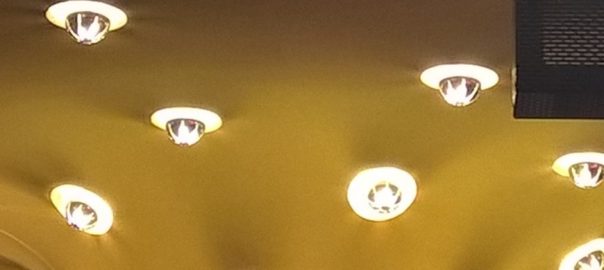Moroccan cinema was, again, well-represented at this year’s Berlinale – one of the most important events on the international festival calendar. For the fourth consecutive year (surely some kind of record!), Hicham Lasri had a film in the official selection of the Berlinale, this year screening in the Forum section of the festival with the world premiere of his latest feature Jahilya (2018) – produced by Lamia Chraibi. The film forms the third and final part of Lasri’s ‘Trilogy of the Dog’, following They Are the Dogs (2013) and Starve Your Dog (2015). Hence it continues the director’s preoccupation with examining Morocco’s socio-political and psychosocial dynamics from a range of perspectives, and foregrounds members of Moroccan society whose voices tend to be marginalised or denied by mainstream political and media discourse. As with all his previous films (including the Dogs’ Trilogy), Lasri combines an experimental approach to sound, image and narrative with dark humour and surreal interactions in everyday settings to expose the social violence and fracture that is engendered by divisive attitudes towards class, gender and generational difference in contemporary Moroccan society.

Jahilya interweaves six separate stories into its 94-minute narrative: a woman who is the victim of sexual violence, a suicidal man, a bigoted judge, a young boy who searches for mutton for a sacrificial feast banned by the king (Hassan II), a blind patriarch’s obsession with maintaining the racial ‘purity’ of his family in selecting a husband for his (pregnant) daughter and, finally, inexplicably, (hilariously) the shoe that was thrown at President George Bush Jr. by an Iraqi journalist during a press conference in 2008… As with virtually all Lasri’s work, the film is full of creative energy and invention, though the complex and at times bewildering connections between the six competing narratives make it difficult for the audience to identify with Lasri’s sombre assessment of the state of contemporary Moroccan society. This is certainly one film that I will need to return to when it screens again at the Festival National du Film in Tangier in March 2018.

Alongside Jahilya in the Forum section of the main festival was Narjiss Nejjar’s much anticipated fourth feature Apatride/Stateless (2018). The film premiered at the festival in the beautiful Delphi Filmpalast. A full-house of several hundred spectators responded with enthusiastic applause at the end of the film and remained fully engaged for the 45-minute Q&A with director and cast that followed the screening. Also present at the premiere was director of the CCM, Sarim Fassi-Fihri, and the film’s Moroccan producer Lamia Chraibi, who as the producer of both Moroccan films in the Berlinale, has further enhanced her reputation as arguably the most talented and dynamic Moroccan producer working in the international film industry today. Apatride tells the story of Hénia, a middle-aged woman who lives in a small village on the Moroccan side of the Algerian-Moroccan border in an exploitative and complex domestic arrangement. On 18 December 1975, Hénia was deported by the Algerian authorities, along with 45 000 other Moroccan families (approximately 350 000 people), forced from their homes with little or no time to gather their belongings. More than three decades after this episode known as la marche noire, Hénia struggles to make sense of where she truly belongs. Some festival reviewers, such as the Egyptian critic and programmer Joseph Fahim, criticised Apatride for following the well-worn path in Arab cinema of exploring the place or women in Arabo-Islamic society and arriving at a predictable (for Fahim at least) critique of female subjugation in the Maghreb. Fahim is right that the theme is familiar to anyone who has taken even a remote interest in Maghrebi cinema over the past three decades. However, I would argue that the strength of Nejjar’s film is that it places this exploration of la condition des femmes in the context of a contested border space, in order to address urgent and far-reaching questions of how the border politics imposed by states in the name of protecting a sense of ‘national’ identity impacts directly on those who live side-by-side in these often-disputed border spaces. Nejjar contrasts the division and animosity between nations fostered by the presence of an official border, on the one hand, and the lived experience of locals that simultaneously support and challenge such divisions, on the other. In one particularly memorable scene, the armed border guards who had previously stood menacingly beneath their respective national flags, on opposite sides of the narrow channel separating Morocco and Algeria (across which Hénia will attempt to swim in her desire to ‘return’ to Algeria), exchange cigarettes and songs across the border fence – addressing each other not as enemies but as ‘brothers’. The fraught and often contradictory nature of co-existence in such a border space is beautifully evoked in Apatride by the cinematography of French DP Stéphane Vallée, as well as through powerful performances by the film’s cast of talented actors.
Beyond the festival screenings, Moroccan cinema also maintained a presence in the European Film Market, the meeting place for industry professionals that runs alongside the festival. The Moroccan film stand, organised by the CCM, occupied its now familiar space in the market on the first floor of the Marriot Hotel. It was teeming with activity, as foreign producers held meetings with officials from the CCM and representatives of production studios from Casablanca and Ouarzazate to discuss the possibilities and financial incentives for shooting in Morocco: a 20% tax credit for international productions spending over $1m in Morocco and shooting there for a minimum of 18 days, was recently approved by the Moroccan parliament. As in previous years, then, the desirability of Morocco as a production service location was, unsurprisingly, placed front and centre on the Moroccan stand. However, it was also good to see the Moroccan filmmakers in the festival being more fully promoted this year, indeed, celebrated, with large posters proudly announcing the presence of Jahilya and Apatride as part of the official selection in this year’s Berlinale.

Elsewhere in the market, a different kind of (diasporic) Moroccan presence was on display with Gangsta (2018), the latest release by Belgian-Moroccan directors Adil El Arbi and Bilall Fallah. The film, which follows the critically acclaimed Black (2015) is a high-octane thriller set in the working-class immigrant neighbourhoods of Antwerp and follows the lives of four drug-dealer friends who aspire to become organised crime bosses. At first glance, the premise of Gangsta may seem to fall back on all the wrong kinds of facile stereotypes of ‘immigrant’ communities as the host nation’s criminalised ‘other’. And yet, as with their earlier films Image (2014) and Black (2015), Arbi and Fallah have won critical acclaim for their latest outing, as well as considerable box-office success in their domestic Belgian market. Gangsta was screening in the European Film Market, with Indie Sales (the film’s international sales agents) hoping to attract the attention of international distributors for what is seen as an eminently marketable film for a crossover international audience. Fresh from their success of directing episodes of the US drama Snowfall and with rumours that they are being lined up by Hollywood execs to direct Eddie Murphy in Beverly Hills Cop 4, El Arbi and Fallah are currently one of the hottest directorial teams in Belgian cinema. Their global ambition is for their own brand of action cinema to reach an audience outside the auteur-led/world cinema festival circuit on which Jahilya and Apatride are set to travel over the coming months. As the Berlinale has showed us this year, the global reach of (transnational) Moroccan cinema takes multiple forms and an impressive array of routes to find its audience…
Will Higbee
